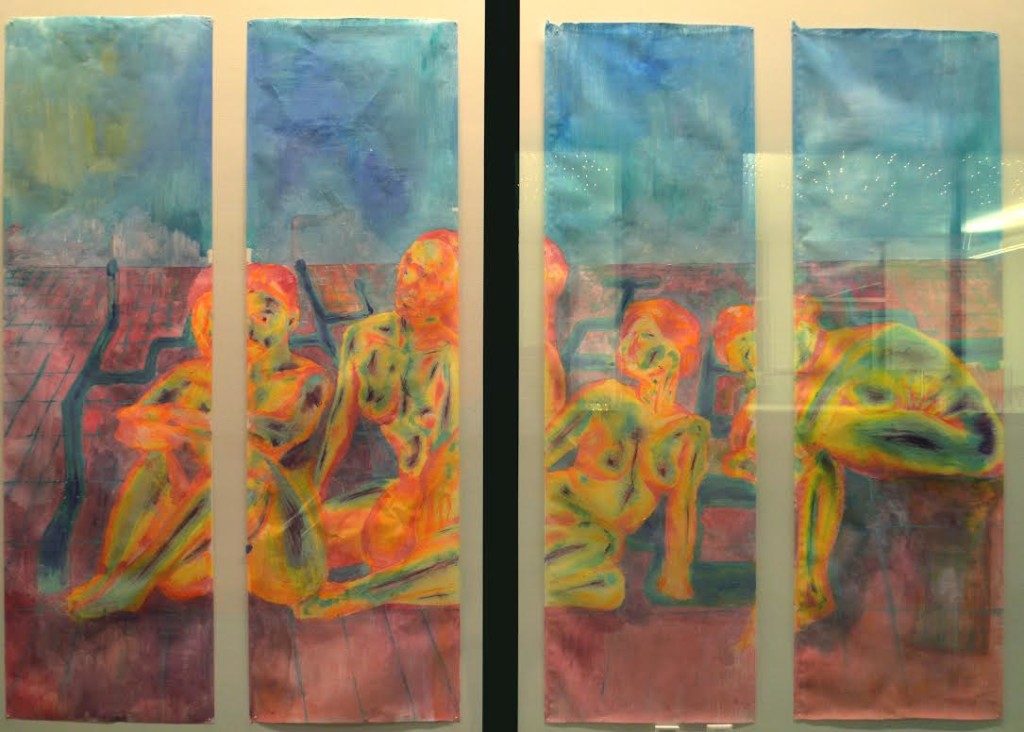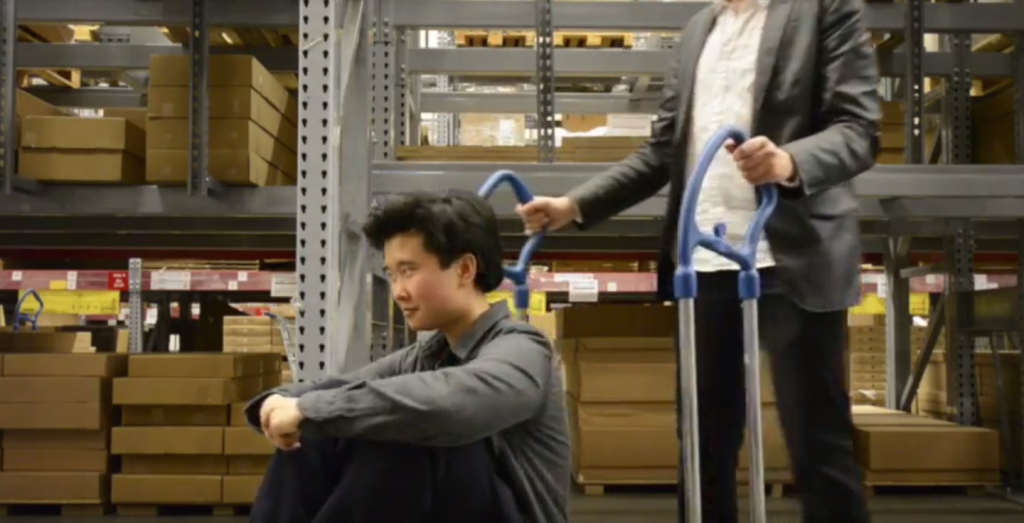
O Eaftos, with works by Lydia Tsiverioti, Gabe Haro, and Didi Chang-Park, presents the frenetic and sometimes poignant fracturing of The Self through the harsh lens of our digital landscape. Onlookers walking into McMurtry’s atrium are treated to Tsiverioti’s Konstantina, a long mural of painted, dripping bodies rendered in burning neon hues. The bodies are skinless, their surfaces recalling infrared heat maps. In effect, the patterns transform the physical body into pure concentrations of energy. The figures ache and bend, whether in pleasure or in pain, their eyeless faces looking at no where and everywhere. Overall, Konstatina, named after the artist’s mother, bridges the gap between our seamless digital sensibilities and the messiness of being human.

Didi Chang-Park’s prints express transformation in a different sense with his series Eye. The most startling piece is Eye II, in which the confines of the human face distort and evaporate into blackness. The eye, so prototypical as symbol of expressing the soul, swells up into a cyclopean vision—demanding our attention. This is me, it tells us, this is who I am. Gabe Haro’s digital montages demand the same presence. His piece Portrait configures distorted and obfuscated visual scraps into a mask, at once obscuring his own face yet also creating it. This energetic push and pull continues in his two other prints Object and Body. Haro’s images of himself dance and glide across a glitched out digital landscape, as we watch how he cuts, enlarges, shrinks, repeats, and morphs his face and body as a crazed motif.

One of the most poignant moments in the show occurs in Goes By, a video project by Chang-Park and Haro, as the pair ventures into the imposing stacks of Ikea. Chang-Park jolts, shimmies, and slides from shopping cart to shopping cart while Haro pushes and struts among the columns of boxed furniture. Madonna’s Hung Up plays in the background as the lyric “Time goes by so slowly” is repeated in all sorts of distorted permutations. And indeed, time does go by in a mundane sense as we watch the background of other Ikea customers carrying on in their daily lives, unaware of Chang-Park and Haro’s activities. Yet there they are, breaking across the normal chain of behavior and railing against the vast homogenization of the act of spending our time by technology, represented by the tall stacks of identical boxes of flattened, mass-produced furniture. And so O Eaftos, like the dancing in Goes By, offers us a brief respite from the imposition of our digital world by breaking free of its confines, molding its pieces, and ultimately creating our own individual performances of the self.
O Eaftos is on view in McMurtry until December 5.
